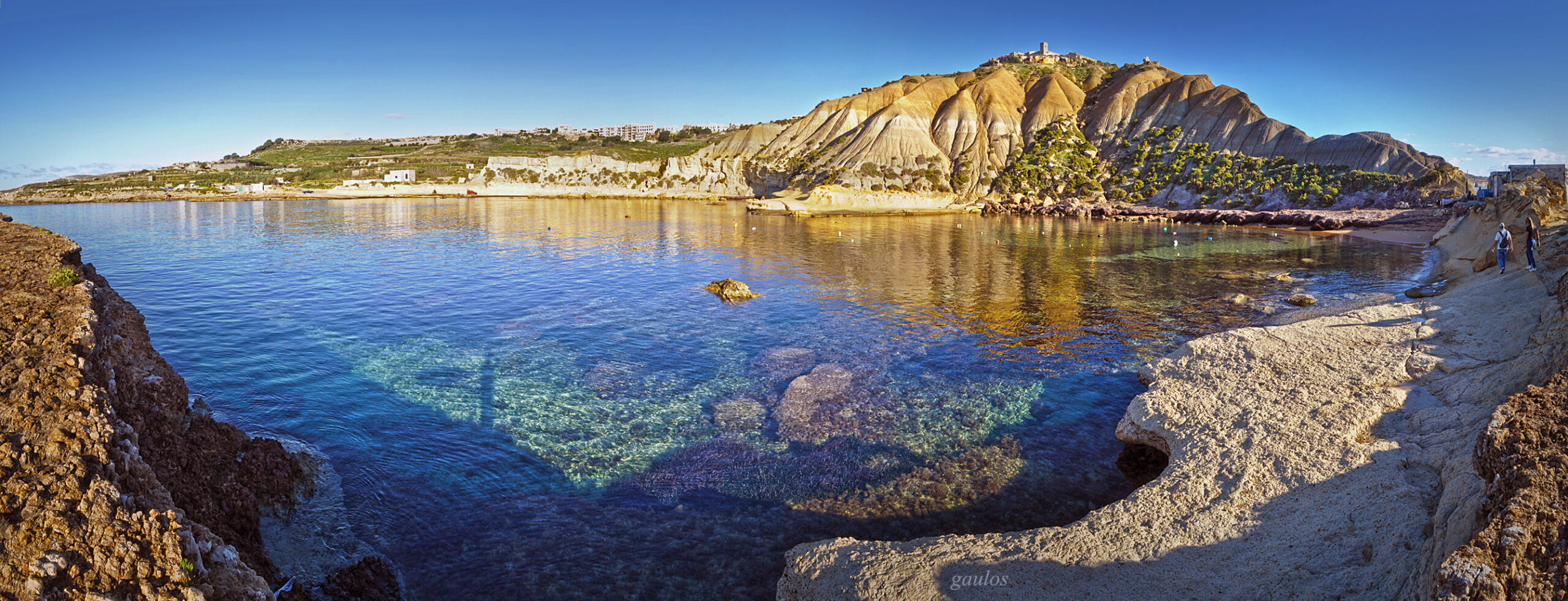“Gozo’s coast scenery may truly be called pomskizilious and grophibberous, being as no words can describe its magnificence.” Edward Lear, (author) 1866.
Edward Lear, a keen visitor to the Maltese Islands, was not alone in his celebration of the magnificence of Gozo’s cliffs, coves, gullies and beaches. Summer and winter, they are breathtakingly splendid and stunningly varied.
There are beaches of red sand like Ramla il-Hamra, literally “Red Sands” where turtles once bred and where a Roman mini-potentate long ago built a summer villa, and San Blas, white sands like Dahlet Qorrot, magnificent deep water inlets that wind their way through the cliffs, like Xlendi and Mgarr ix-Xini, or coves of pebbles, like the romantically named Hondoq ir-Rummien, “Pomegranate cove”. Xlendi is where Phoenician galleys sought shelter and where, on storm days, they were wrecked on a treacherous reef, leaving amphorae lying in stillness in the depths of azure waters.
Then there are the wild imposing cliffs, where the breeze carries the scent of wild thyme and the brilliant turquoise waters of comino, the tiny island across the way, sparkle in the sunlight. The Maltese falcon, which gave its name to a Humphrey Bogart film, once bred on these cliffs. But sadly, it does so no longer – though some say that its cry still echoes in the wind.
One of the best – known bays is Marsalforn, which hums and buzzes until the early hours of the morning during the hotter months, but which is left to the sea spray and the net-mending fishermen in the winter. Traditionally, this was the summer resort of the middle-class from the town of Victoria, which is all of four kilometres away – a burdensome, hilly journey in a horse-drawn carriage in the summer heat, before cars came along.
Dwejra, with its curious rock formations and spilling seas, is also a magical attraction with spectacular deep-sea swimming down a cliff-path, and spell-binding diving through what is known as the “Blue Hole” near the Azure Window and the Inland Sea.
Dwejra is also home to Fungus Rock, a solitary outcrop standing in the sea many metres from the shore. It is known, in the local tongue, as il-Gebla tal-General “The General’s Rock”, in memory of the Italian officer who, several hundred years ago, fell to his death while supervising quarrying activities in the area. The rock was heavily guarded by the Knights of St. John, who set great store by a special plant that grew there, and which was believed to have medicinal properties. This was picked by slaves and brought to land using a primitive system of baskets and pulleys, it was then crushed and mixed with soup or wine, to be given to those suffering from intestinal disorders. Anyone found raiding the rock for the spiny orange-red plant was sentenced to death, or a fate worse than that: a lifetime of rowing service on the cruel galleys. The plant, cynomorium coccineum, was so precious that it was presented to visiting dignitaries in the customary exchange of gifts.
The following is a list of all the beaches and other bathing and diving spots beginning from ir-Ramla l-Hamra and proceeding clockwise around the island.
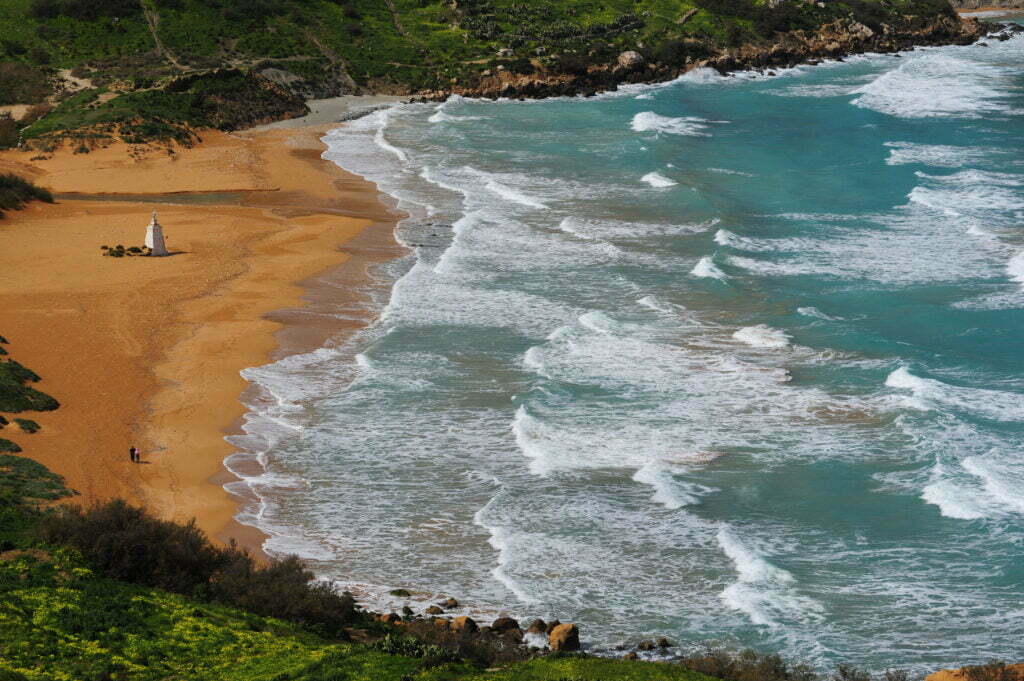
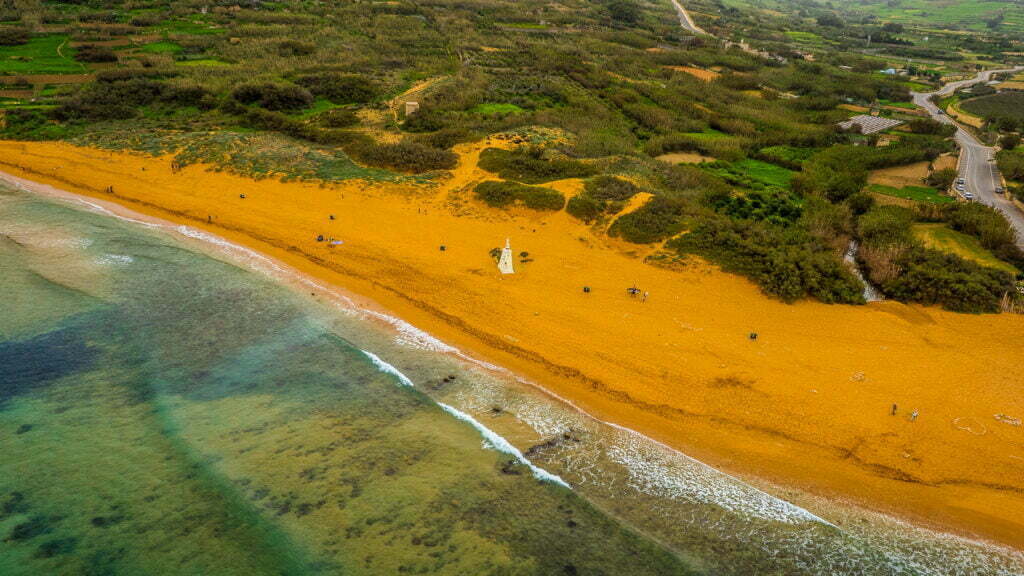
Ir-Ramla il-Hamra (easily accessible by car through Nadur or Xaghra) is the largest, the best and still the most unspoilt haven of the island of Gozo. The whole beach is a spread of red sand. The sea is shallow and perfect for children, except on windy days. On the right seaward, a path leads up to Taht l-Irdum where the water is deeper.
Apart from being a beautiful beach, Ramla l-Hamra is also a historic site. The Romans built a villa richly decorated with marble and stucco. So sophisticated was this building that it boasted its own hot bath supplied with water from a nearby spring, channelled to the villa. These Roman ruins now lie re-buried beneath the red sand.
The Knights of St. John fortified Ramla l-Hamra against enemy intrusion. They constructed Vendome battery, which today is inconspicuous and in 1715, even went so far as to construct a submerged wall to deter marauding pirates from landing on the beach. High up on the cliff facing the sea, the Knights dug a Fougasse, a hole into which explosive material was pressed and fired at the invaders.
Today Ramla l-Hamra displays nothing of these disturbances. In the summer months it is popular with swimmers, sun worshipers and idlers sitting around tables beneath sun umbrellas at a kiosk, sipping cool drinks and nibbling snacks. During winter months Ramla l-Hamra affords pleasant peaceful walks. A statue dedicated to Our Lady of Hope, stands vigil in the middle of the beach.
San Blas (reached through Triq San Blas, Nadur) is a delightful little secluded beach of red sand. The path to the sea is rather steep but the sandy beach is of exceptional charm and worthy of a visit. This quaint idyllic beach is never crowded.
Dahlet Qorrot (accessible by car though the road is steep, through Nadur). The beach is tiny but one can swim off the rocks on both sides in crystal clear water. Fishermen use this tranquil bay as a base, and colourful boats dance silently on the waters during the summer months.
Hondoq ir-Rummien (easily accessible by car through Qala) is a small sandy beach with crystalline water and there is ample space for sunbathing. Snacks are available from a gabbana (Kiosk). This beach is also a good diving site especially for beginners and night dives. Hondoq ir-Rummien is very popular with locals and can be crowded during weekends. It is a favoured spot for summer evening barbecues.
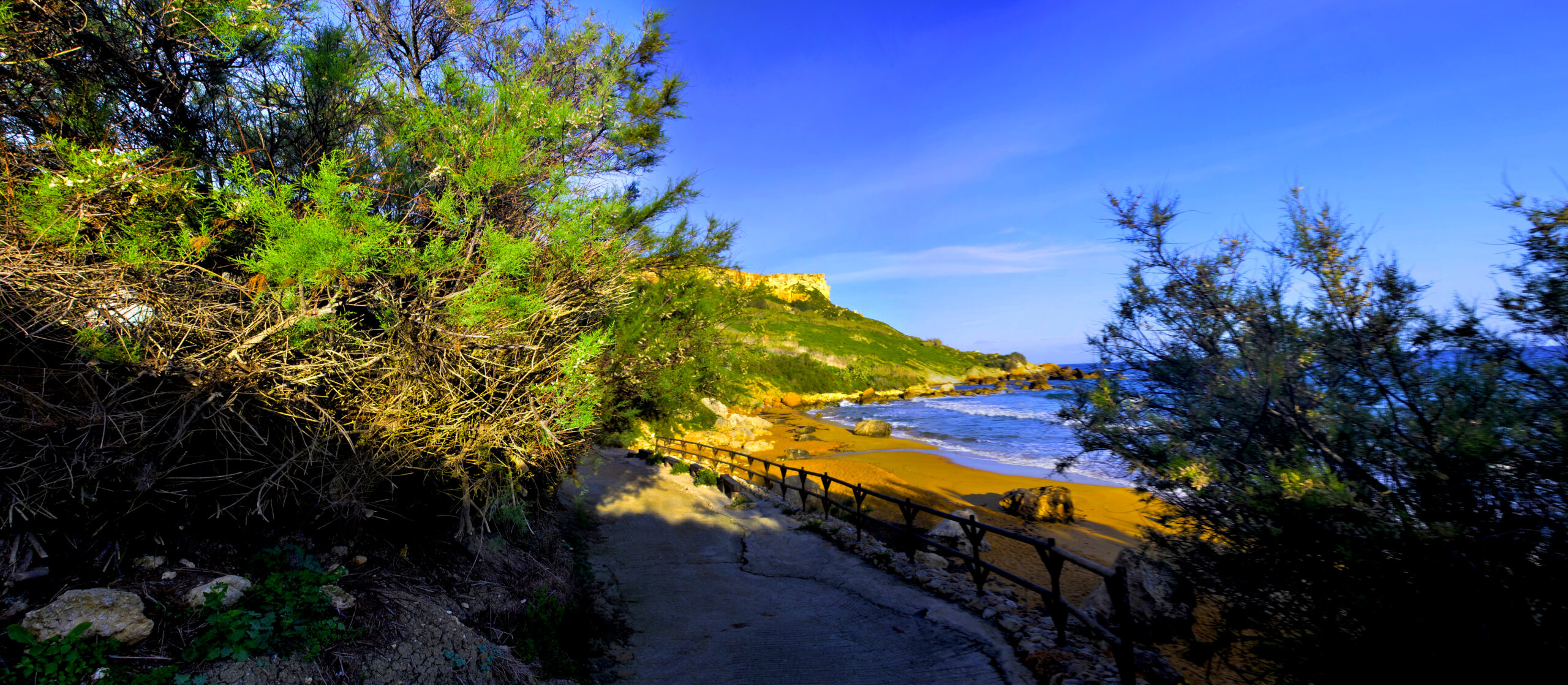
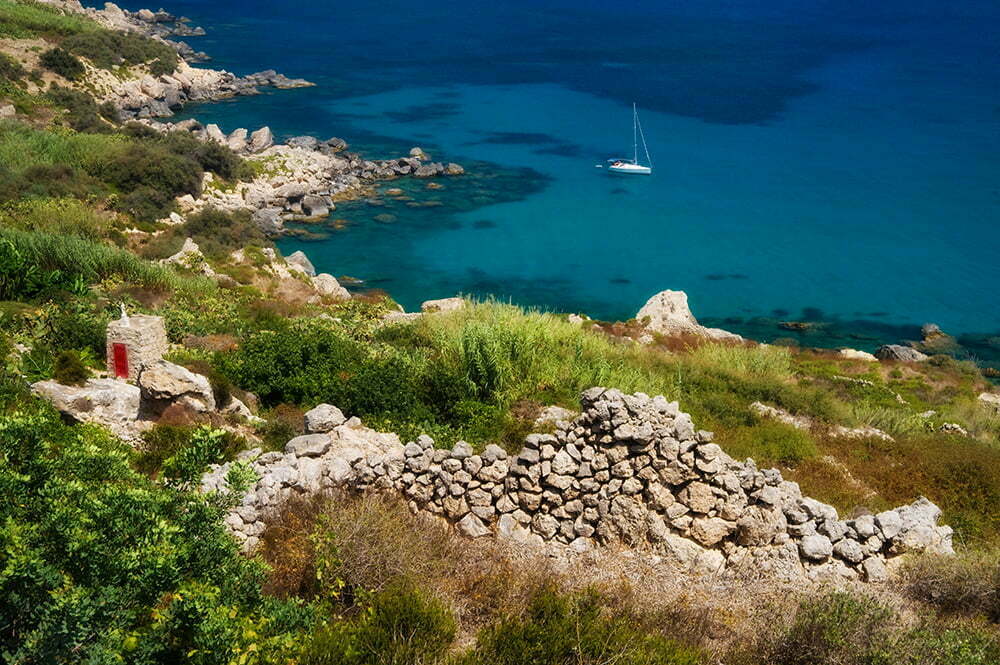
Ix-Xatt l-Ahmar (on the Mgarr – Rabat road, to the left just after reaching Ghajnsielem) is another secluded bay with ample space for diving. The wreck of the “Xlendi”, a ferry boat that until recently plied between Malta and Gozo lies in the depths of this location, thus enhancing the attractions of this excellent dive-site. Swimming is possible off white rocks, but ladders make getting in and out of the water easy. From this spot lovely view of the west coast of Malta can be seen.
Mgarr ix-Xini (easily accessible by car either through Sannat or Xewkija) is a fjord- looking cleft with sheer cliffs rising from a pebbly beach and intriguing caves. This secluded spot is ideal for swimming and another quaint and attractive dive-site especially for night diving. This peaceful bay is never crowded.
Xlendi (easily reached by car either through Fontana or from Munxar) is together with Ramla l-Hamra and Marsalforn, on of the three major each resorts of Gozo. It is possible to swim in a small sandy beach or paddle and snorkel off the rocks surrounding this beach. One can also swim off the rocks beneath the watchtower that stands guard at the mouth of Xlendi bay. The reef and rock formations under the sea make Xlendi an excellent dive site also for beginners. Xlendi is a fishing village and a small menqa (small harbour) gives shelter to a number of boats in both summer and winter. A stature of St. Andrew patron saint of fishermen watches over the activities of locals and holidaymakers as they walk along the promenade and sit at the bars and restaurant on the seafront and the tiny streets off the seafront.
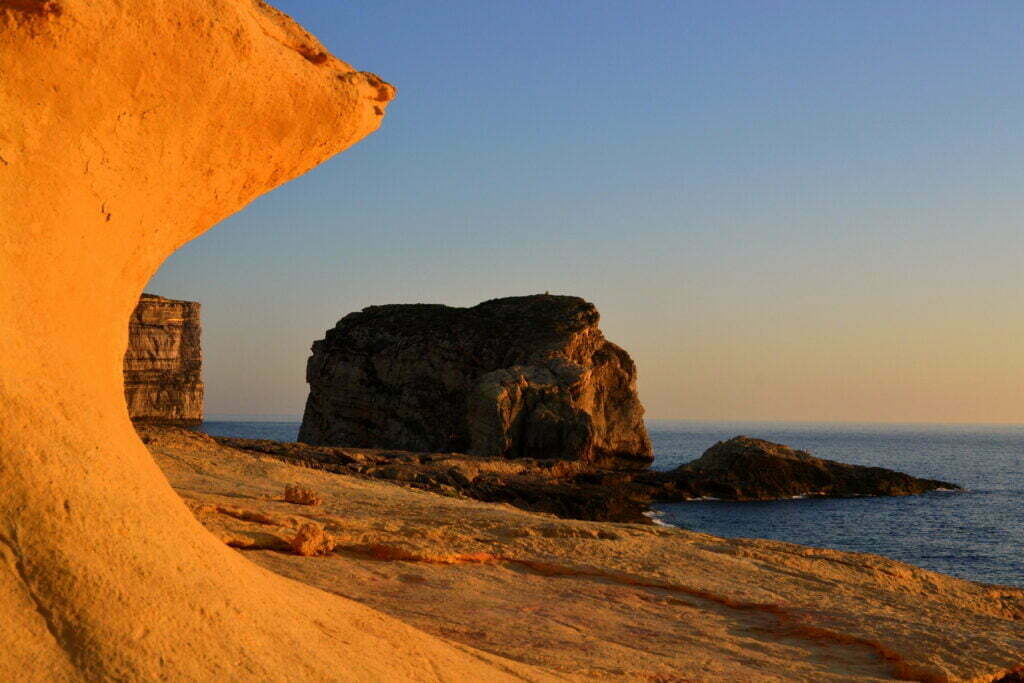
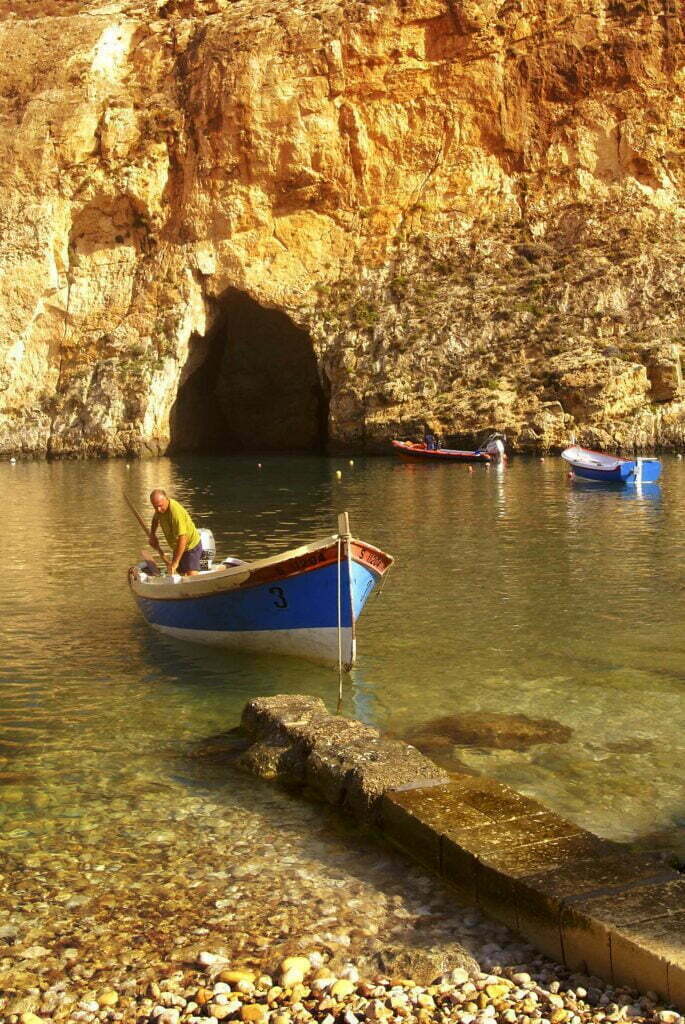
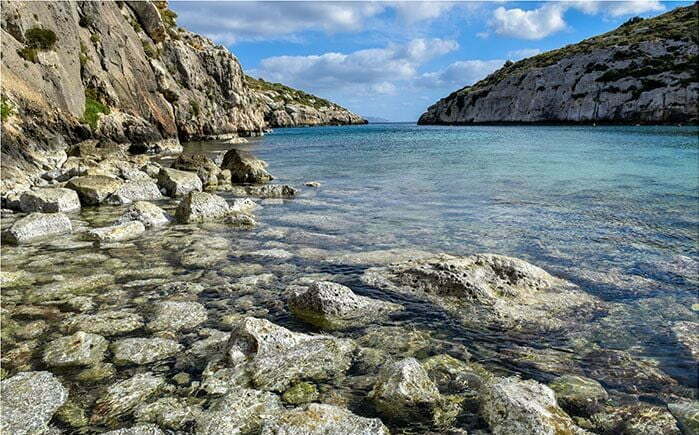
Id-Dwejra (easily accessible by car through San Lawrenz) is partly enclosed by the Hagret il-General. The water here is very deep and the occasional swell may be dangerous. It is however a haven for the strong swimmer. It is also possible to swim at the Inland Sea, where the sea has cut into the cliffs to form a shallow, sheltered salt-water pool with pebbly crystal clear water. Boat trips from the little jetty take the visitor out to the open sea through a natural tunnel in the cliffs. Once through the tunnel the cliffs rise majestically out of the water and the boatmen wander slowly around a number of caves, which dot the coast. The various dramatic rock formations, coves and drop-offs have earned Dwejra the reputation of being among the best dive-sites in the Mediterranean and undoubtedly the best the Maltese Islands offer. The variety of fish found in these waters is also a major attraction. Snacks and refreshments are available from gabbani (kiosks).
Wied il-Ghasri (reached through Ghasri and Marsalforn) is a fjord-looking tiny beach wedged between high cliffs and can be reached ideally by boat. The fantastic cove and airlock are the main attractions at this dive site.
Ix-Xwejni and Il-Qbajjar (easily reached through Marsalforn or Zebbug) are two shallow beaches with pebbly corners and rocky stretches very close to each other and are ideal for swimming. They are popular dive sites, especially for beginners. A couple of bars and restaurants line the sea front.
Marsalforn (easily reached through Rabat, Xaghra or Zebbug) is the most popular summer resort of the island. Here there is a good choice of diving spots off the rocks and on a pebbly beach. Just behind the menqa (harbour), one finds the deep clear waters of Ghar Qawqla where swimming off the rocks is a delight. Marsalforn offers the widest variety of bars and restaurants, most of them al fresco.
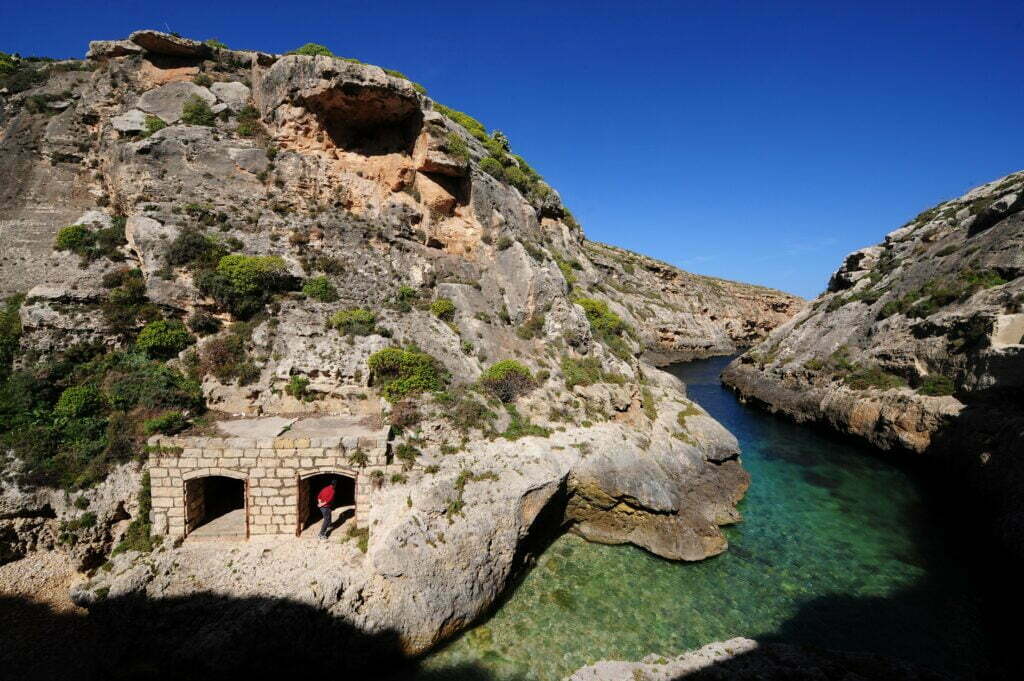
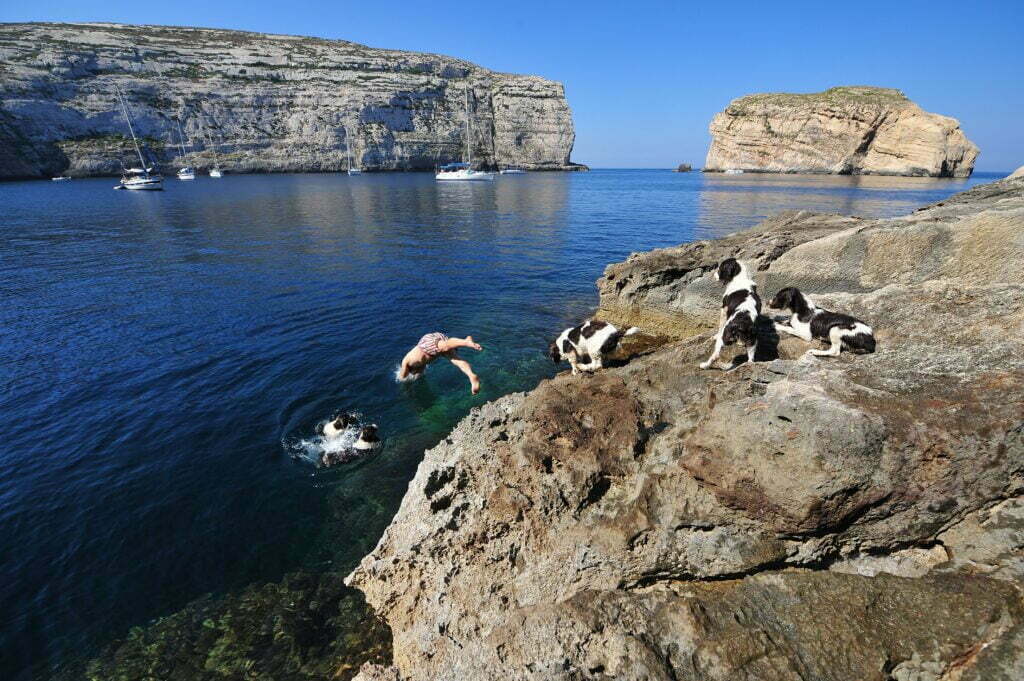
Ghajn Barrani (reached through Marsalforn and Xaghra) is not easily accessible and some scrambling over rocks is necessary to reach this tiny, quiet and secluded sandy beach.
Comino (reached by frequent boat trips from various points in Gozo) has three secluded beach havens with clear turquoise blue water. Santa Marija Bay, San Niklaw Bay and Bejn il-Kmiemen (between comino and the islet of cominotto) also known as the Blue Lagoon. The beauty and attraction of comino islet as a swimming paradise is matched by its underwater caves and reefs which attract experienced divers. Food and refreshments are available from the two hotels on the island.
